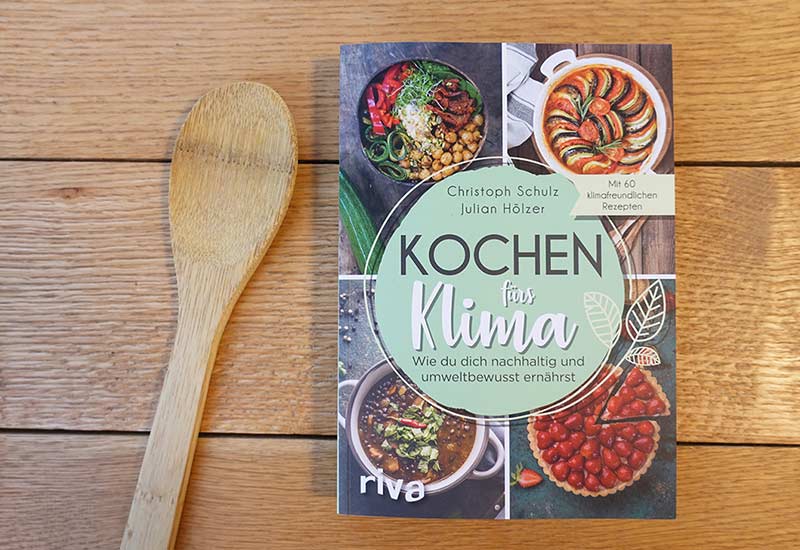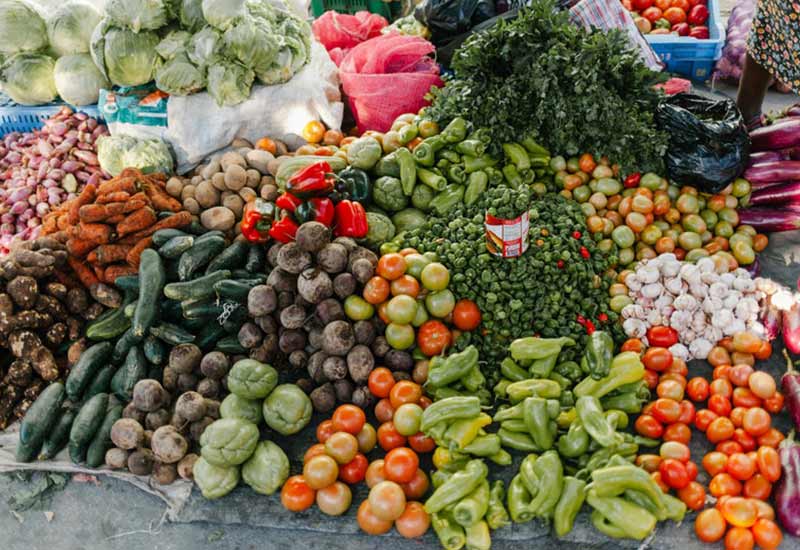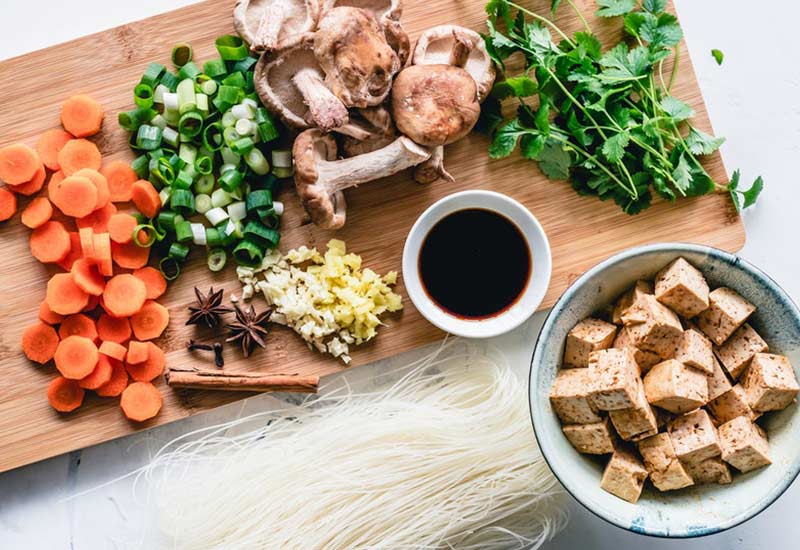What does a full vegan diet actually look like? It is often reported that a vegetable diet healthy as long as it is balanced and well planned. In particular, terms such as "whole foods," plant-based whole foods, or whole-food nutrition play a major role. But what does this mean - and how do you put it into practice?
Now, in this article, I'm going to present you with a definition, benefits, and practical tips for implementing a whole-food vegan diet.
Here is another Table of contents as an overview:
Notice: This article is not a substitute for medical advice, but only provides general information about whole food nutrition. Please consult your doctor if you feel unwell or want to prevent health problems with medical care.
What is full vegan diet?
So far, there is no single definition of what a whole-food vegan diet means. For me, it means planning my food intake in a well-informed way based on my nutrient needs and dietary preferences so that I can Meeting needs, healthy and delicious diet. This also includes that I largely unprocessed, fresh, regional, seasonal and organically produced Food prefer.
Vegan, by the way, does not always mean full or healthy. There is also the so-called Vegan junk food dietThis is a diet in which more processed, sugary convenience foods are eaten. This type of diet aims for maximum enjoyment, but neglects health.
What are the benefits of a whole food plant-based diet?
First, I want to explain to you here why you should even bother with the Whole Food Plantbased Diet.
Healthier
A great advantage is the Increasing your own health. A normal mixed diet contains more additives, flavorings, and preservatives, more sugar, salt, and saturated fat than a varied plant-based diet.
The vegan lifestyle is also better for acid-base balance, provides a higher nutrient density and can be diet-related diseases avoid. A large number of studies show that a plant-based, whole-food diet significantly reduces the risk of death from cardiovascular disease.1,2,3

More environmentally and animal friendly
People who eat a plant-based diet consume fewer resources, water, land area and CO2 compared to a meat-, egg- and dairy-heavy diet. A very extensive topic. You can find out why this is the case in detail in our articles on Nutrition and environment and the possible sustainable nutrition.
An essential part of our environment are the animals. I recently read that there are about 25 billion chickens that we raise for the consumption of meat and eggs. You can see the astonishingly high numbers of chickens dying daily by here see. By eating a plant-based diet, you can help ensure that fewer Animals suffer and have to die.
Notice: If you're in the mood for a plant-based, environmentally conscious diet, I highly recommend our book Cooking for the climatethat Christoph and I wrote for you. You get it here*.
How does a balanced, whole-food vegan diet work?
Motivated enough? Then let's move on to the practical part of this article and clarify what exactly the most complete diet looks like and what you should pay attention to.
Food selection
In order for your diet to be complete, you should Integrate as much as possible all plant food groups. These include Fruit, vegetables, Legumeswhole grains, nuts, seeds and oils. If you do not eat legumes, for example, you are missing an important source of fiber, which has a positive effect on intestinal health and colon cancer prevention.
Fluid intake
Hydration is also an important element. Water and unsweetened teas should be the basis of your fluid intake. Flavored fruit teas, coffee and alcoholic beverages are stimulants that should only be consumed in moderation. Alcohol, by the way, is not always vegan either, sometimes animal substances are used for clarification, for example.
Tip: At "Why wine is not always vegan" you can learn more about it.
Cover nutrients
Make sure that you have potentially critical nutrients Vitamin B12, Vitamin B2, Vitamin D, Iron, Iodine, Selenium, Zinc and Calcium in sufficient quantities. You can already take in many of these substances through your food. Ideally, you can supplement your diet as a vegan by taking a sensibly composed food supplement complete.
Nutrient density
Increase the nutrient density by using especially nutrient-dense foods like dark green leafy vegetables, Sprouts and lactic fermented vegetables. Fermented foods like fresh sauerkraut promote your gut flora and gut health and can reduce cravings. A high nutrient density promotes your health and your Well-being and is thus a central element of a wholesome plant-based diet.
No sugar

Sugar is addictive and makes you sick in the long run. Due to the strong increase in blood sugar levels, you first experience a high, but the low is not long in coming - and then you need sugar again. I like to do without this vicious circle and therefore prefer to use Natural sweeteners such as fruit or dried fruit back. If necessary, you can also use stevia or xylitol, which have no effect on blood sugar levels.
Tip: At 30-Sugar Free Challenge you can see an experiment in which Christoph deliberately avoided added industrial sugar for a month.
Largely unprocessed
Use in your kitchen mainly Unprocessed or gently processed foodsuch as cold-pressed, virgin olive oil or nut puree. This is especially true for pasta, couscous, bread, rice, or breakfast cereals, where you should often use the Whole grain variant should buy. This is because unprocessed foods have a higher nutrient content and contain fewer harmful additives.
Tip: You can find further input on this in the article Diet without substitute products.
Alkaline food
Acid-base balance can also play an important role in a whole-food vegan diet, as it can affect degenerative diseases such as osteoporosis, for example. For a balanced acid-alkaline balance it is good if you predominantly base-forming foods and, in the case of acid-forming foods, to distinguish between the so-called "acidic" and "acidic" foods. good and bad acid formers distinguish. Good are legumes, whole grain products or nuts and bad acid producers are for example coffee, alcohol or white flour products.
Proper storage
Optimally, as little time as possible should go from harvesting to consumption, because after harvesting the nutrient content begins to decrease. Of course, it is ideal if you garden yourself and get your vegetables from your own garden into the kitchen. Unfortunately, this is not always possible, so you should find out how you can grow various Store food optimally simply by following your heart.
Gentle preparation
In order to lose as few nutrients as possible during preparation, it should be gentle. Depending on the vital substance content, foods tolerate water or heat better. Generally the Steaming quite gently - and you should also heat food only as long as really necessary. In addition, it is good for a wholesome vegan diet if you avoid frying too hot.
Individuality

Pay attention to a full vegan diet to your individual needs and taste. After all, there's no point in choking down the healthiest foods and feeling bad about it. For example, some people don't tolerate gluten very well and should therefore avoid it. For others, gluten is not a problem at all.
In the same way, you should adjust the raw food portion to it, how much is digestible for you. In fact, some people can digest raw foods quite well, while others find them stomach-churning. The same applies to the distribution of macronutrients, i.e. Carbohydrates, Fat and Proteins. Depending on your constitution, intestinal flora, amount of exercise and other factors, high carb, low carb or a completely different distribution may be more suitable for you.
Exceptions
Your diet should never be dogmatic and obsessive. Instead, you should be free to choose and that includes that it's okay to also make an exception for onceif you feel like it. It's also important that you don't overcomplicate your whole-food vegan diet, because that's hard to keep up in the long run.
Wholesome, vegan and healthy
A conscious, plant-based diet has a positive effect on your health, your well-being, the environment and, of course, the animals. With the right tips and recipes, whole foods are not only wholesome, but also delicious! These are already some good reasons to think about a change.
I hope that I was able to inspire you with this article and that the tips will help you to implement your wholefood vegan diet. Half the battle is the right choice of food, which is why you should pay attention to what is good for you at the beginning of the transition, especially when shopping.
All the best,

P.S.: If you now want to know more about Health Promotion you will find further inspiration in the articles on Forest bathing, Intermittent fasting or Meditation.
References:
1 Satija Ambika et al, Healthful and Unhealthful Plant-Based Diets and the Risk of Coronary Heart Disease in U.S. Adults, July 2017, https://pubmed.ncbi.nlm.nih.gov/28728684 [Feb 20, 2022].
2 V. Rao & A. Al-Weshahy, Plant-based diets and control of lipids and coronary heart disease risk, Curr Atheroscler Rep, December 2008, https://pubmed.ncbi.nlm.nih.gov/18937895. [20.02.2022].
3 C. B. Esselstyn et al, A Way to reverse CAD?, J Fam Pract, July 2014, https://pubmed.ncbi.nlm.nih.gov/25198208. [Feb. 20, 2022]






